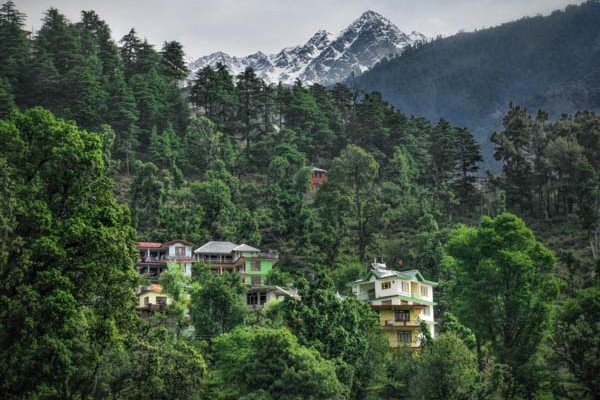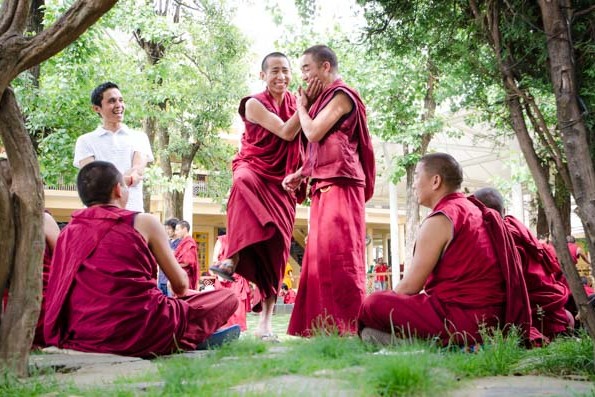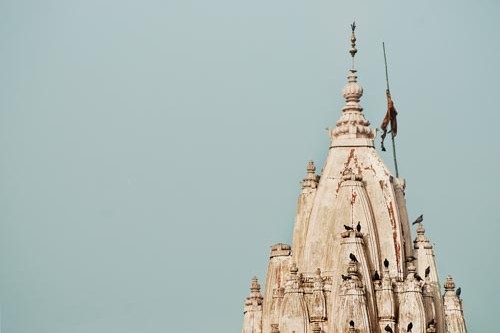Tibet in Exile » the Monks of McLeod Ganj, India
Who doesn’t like seeing a monk on the street?
With their big smiles, flowing robes and peaceful way of life, monks are a refreshing reminder of goodness in our world.
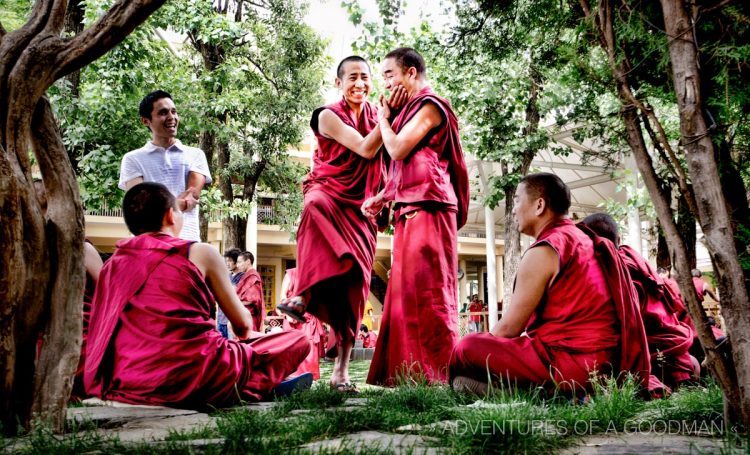
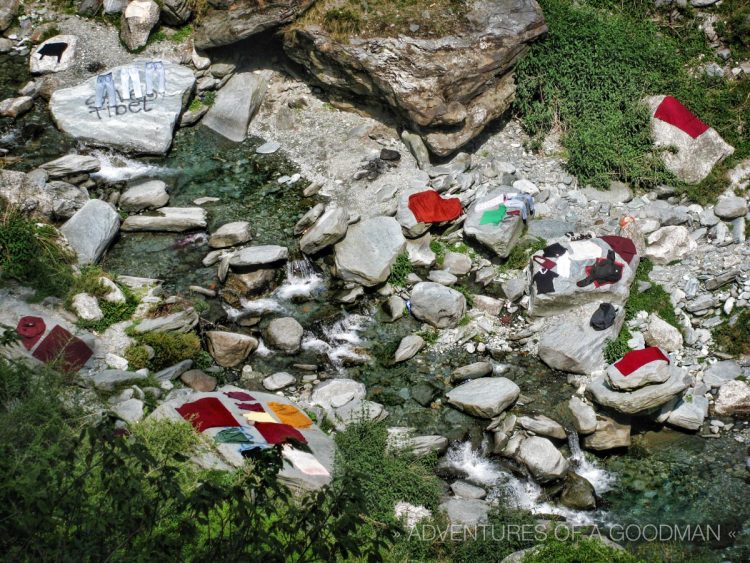
Tibet has an Indian Postal Code » McLeod Ganj, Dharamsala
A sleepy little town in Himachal Pradesh, McLeod Ganj feels more like Tibet than India. Streets are lined with Tibetan prayer flags, momos are served in place of samosas and getting a good thali is nearly impossible.
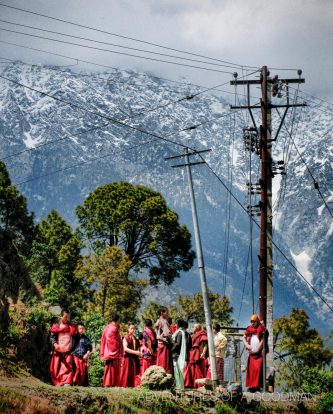
Also known as Little Lhasa, after the capital city of Tibet, McLeod Ganj is home to thousands of Tibetan refugees including His Holiness the 14th Dalai Lama.
A GOOD READ: the story of my visit to the Dalai Lama’s home and compound
From the bustling downtown of Dharamasala City all the way up to Bhagsu, Naddi, Daramkot and beyond, monk-sightings are a part of daily life. Dressed in deep red robes, it’s not uncommon to find a shaved head sitting in an internet café, sipping tea or taking photos of their surroundings on an iPhone.
My personal favorite monk sighting, and by favorite I mean most odd/disturbing, was in a video game café in McLeod Ganj, India. As you can see from the photo below, guns were blazing as a couple of teenage monks shot their enemies in an X-box war
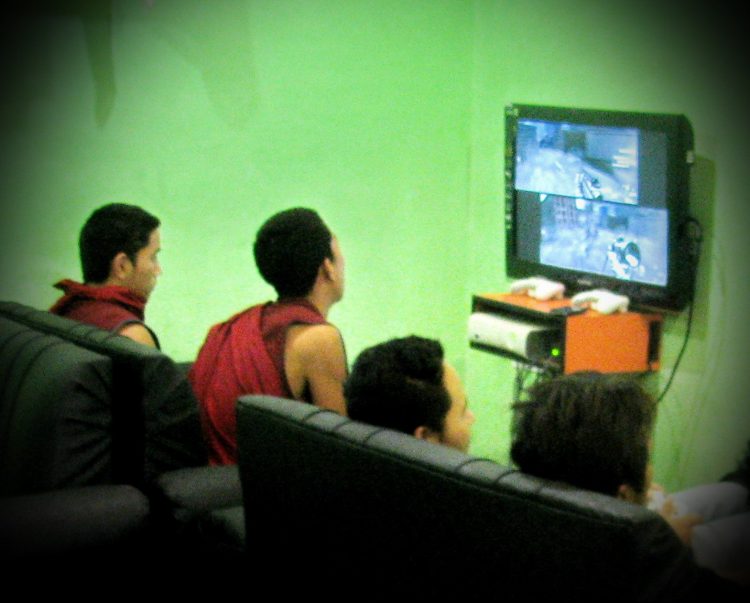
The Sad History of Tibetan Monks in McLeod Ganj, India
Looking around town, it seems as if the monks of McLeod Ganj, Dharamasala, are at home in their Indian digs. While that may be true, the sad reality is that these Tibetan monks are living in exile, following the Chinese invasion of Tibet in 1959.
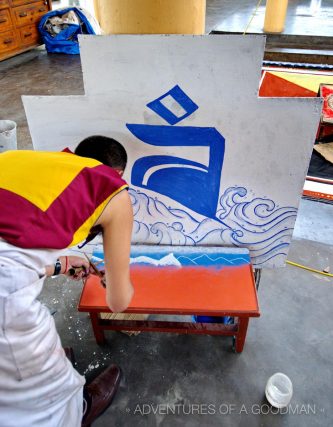
Before visiting McLeod Ganj and the Tibet Museum outside the Dalai Lama Complex, I honestly knew very little about the atrocities committed against the Tibetan people. Now, I want to share that knowledge.
“Human rights abuses documented in Tibet include the deprivation of life, disappearances, torture, poor prison conditions, arbitrary arrest and detention, denial of fair public trial, denial of freedom of speech and of press and Internet freedoms. They also include political and religious repression, forced abortions, sterilization, and even infanticide.
According to a UN report regarding the adoption of its Tibetan resolution in 1965, ‘The Chinese occupation of Tibet has been characterized by acts of murder, rape and arbitrary imprisonment; torture and cruel, inhuman and degraded treatment of Tibetans on a large scale.'”
Then there’s the genocide. According to a Tibetan Government in Exile census, more than 1.2 million people have been murdered since 1959: a figure that is challenged by the Chinese government.
~info courtesy of Wikipedia
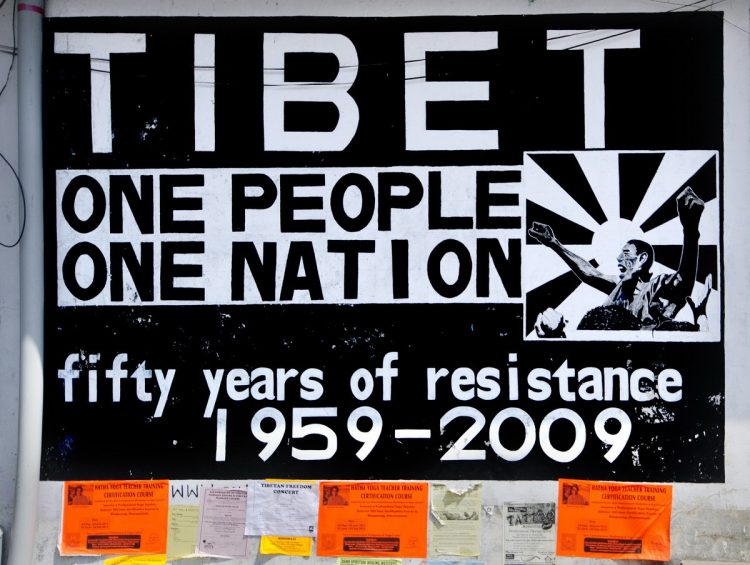
Self-Immolation & Free Tibet Signs Everywhere
In protest of the Chinese occupation of Tibet, it’s common for monks to light themselves on fire to draw media attention towards the cause. These acts of martyrdom are documented all over McLeod Ganj, India, on large posters, banners and signs.
Personally, I don’t really know how much good monks lighting themselves on fire does: considering that the occupation has been going on for 50+ years with no signs of ending.
Still, I do respect the sprit of resistance that the Tibetan people embody and truly do hope to one day visit a free Tibet!
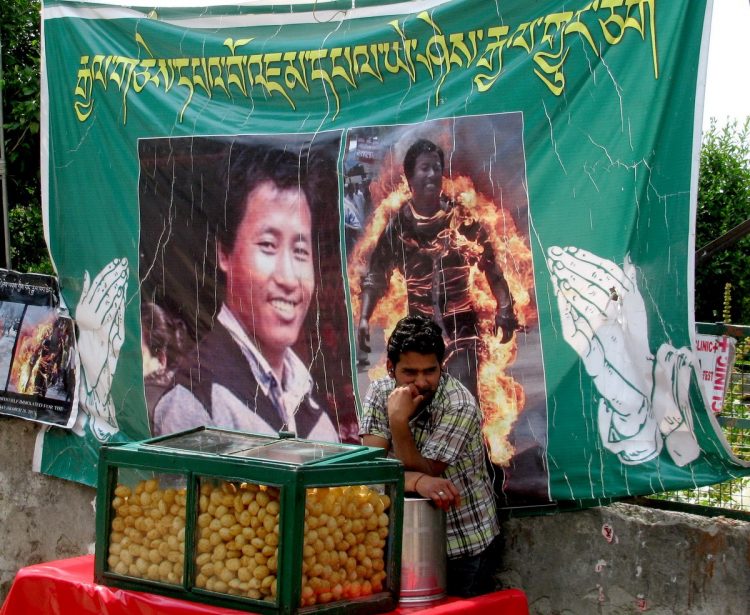
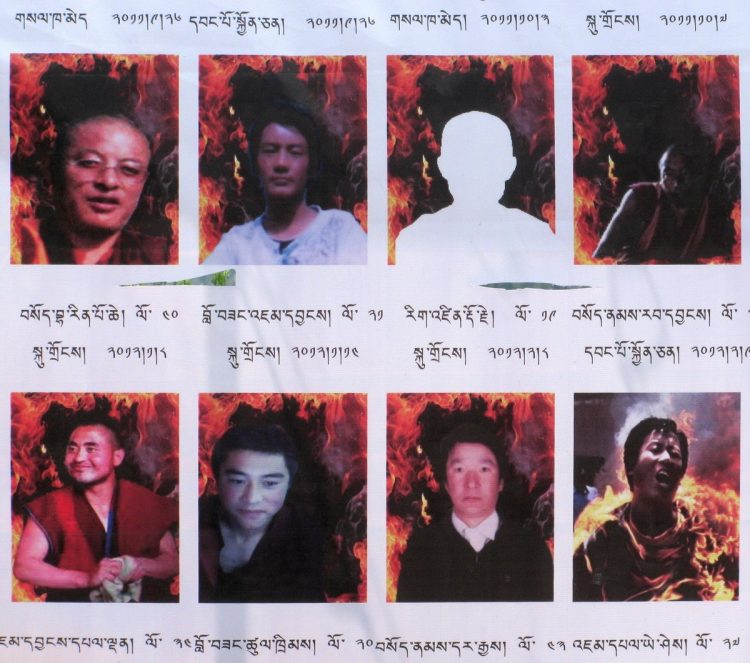
For More Information about China and Tibet
To learn more about the history of China in Tibet, I encourage you to visit the below sites:
Counterpoint: Because life is never one-sided, here’s an interesting look at the Tibetan occupation from the Chinese Government’s POV
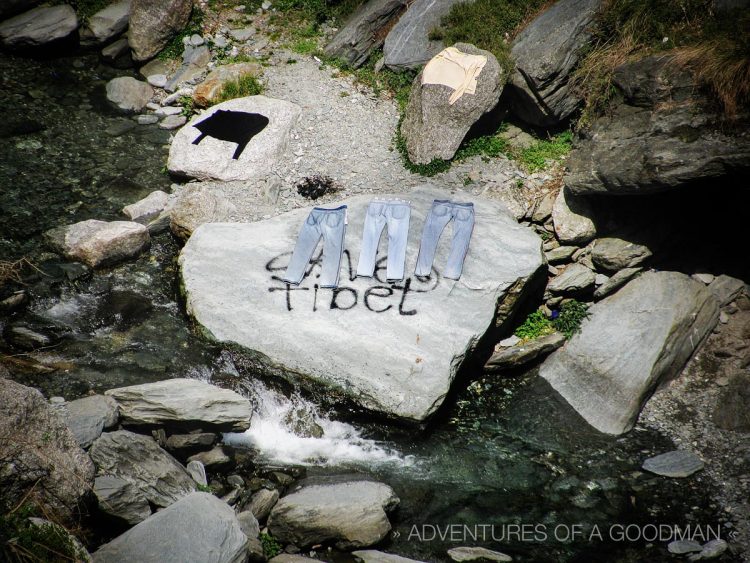
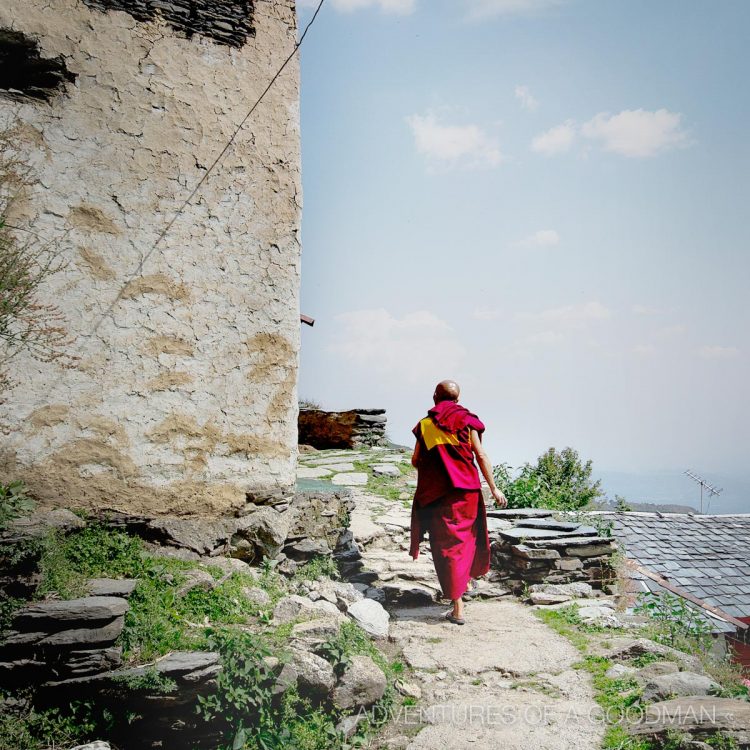

Thoughts?
Reactions?
Outrage?
Share & Discuss…
EXPLORE SOMEWHERE NEW
BUY A PRINT
All photos on this site are available as limited edition fine art photographic prints. Please get in touch for sizes and rates.


